2020 has been much awaited for those attuned to California groundwater management. The passage of the 2014 Sustainable Groundwater Management Act (SGMA) required California’s critically depleted groundwater basins to develop groundwater sustainability plans, or GSPs, outlining a path to bring the basins back into sustainability over the next 20 years. January 31, 2020, marked the submission deadline for the first round of GSPs, providing a glimpse at how local agencies plan to reduce groundwater demand and increase water supply in order to bring the state’s groundwater use back into balance.
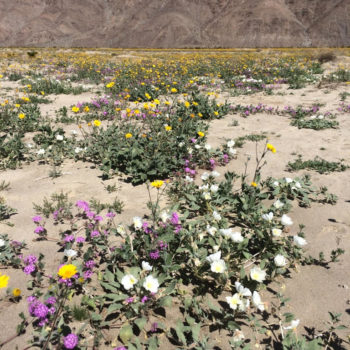
Photo courtesy of David Garmon
As 2020 comes to a close and we look ahead to the new year, the community of Borrego Springs finds itself yet again at a crossroads. In January, the Borrego Water District (BWD) submitted Borrego Valley’s Groundwater Management Plan, or GMP, to the Department of Water Resources (DWR), charting a path for the community’s water sustainability over the next twenty years. For an unincorporated community with a declining groundwater supply as its sole water source, long-term groundwater planning is critical to the region’s viability. As detailed in our previous article, “Saving Borrego’s Lifeblood” this GMP was not developed without contention.
From 2016-2019, Borrego was drafting a different plan — the Groundwater Sustainability Plan or GSP — to comply with new regulations mandated under the Sustainable Groundwater Management Act (SGMA). The publicly-developed GSP was set to pave the way for California’s overdrafted groundwater basins, serving as a statewide model for community-driven integrated planning.
However, under pressure from the County and looming lawsuits over the GSP’s proposed pumping allocations, the basin’s major pumpers opted to pursue an alternative process – a “stipulated agreement” or a “friendly adjudication.” California water code allows basins to submit this type of alternative agreement if 75% of the pumpers agree to it and if it keeps with the hydrological mandates of SGMA. Borrego’s stipulated agreement and the attached GMP calls for the basin to be managed by a Watermaster Board (WMB) composed of pumpers, San Diego County, and one community representative. Although many community groups were outraged by the dismissal of the publicly-developed GSP, Borregans have since come to accept the privately-negotiated GMP because it requires accelerated water use reductions to meet Borrego’s 5,700 acre-feet (AF) annual “sustainable yield” by the 2040 SGMA deadline. To meet these pumping reductions, Borrego will have to reduce its water use by 75% over a twenty-year period. Time is of the essence.
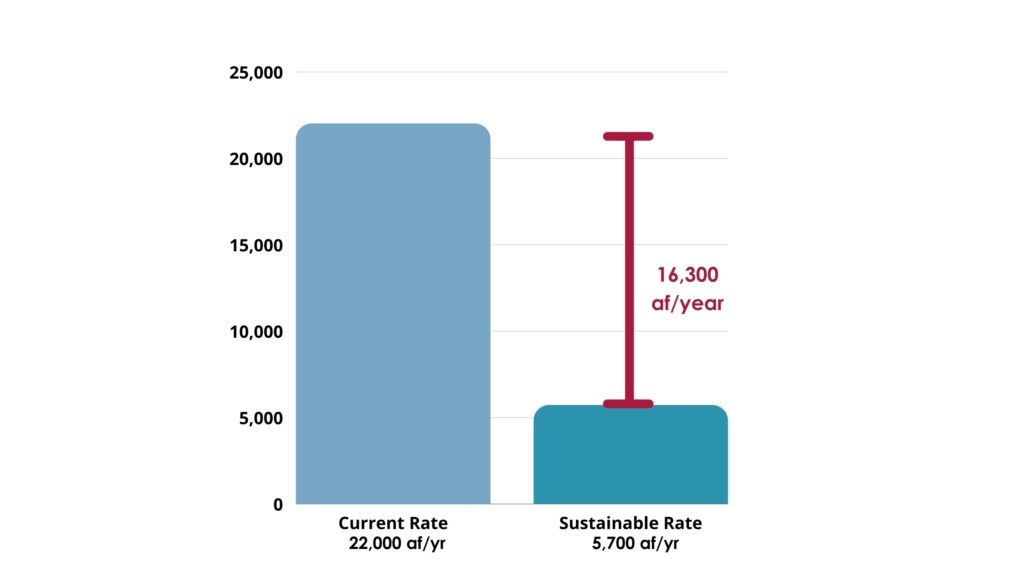
Sustainable Yield – Borrego Valley Groundwater Basin
As Borregans look toward 2021, two legal questions loom for the future of the GMP – DWR must accept the plan as compliant with SGMA, and the Orange County Superior Court, assigned to review Borrego’s GMP, must certify the stipulated agreement. In the meantime, BWD and the basin’s major pumpers are moving forward: developing the structure and management of the Watermaster Board, selecting an Executive Director for the Board, and designating five Board members representing BWD, agriculture, recreation (golf), the community, and San Diego County. The WMB has also established an Environmental Working Group, composed of two WMB board members and three at-large members, showing signs of hope for protecting Borrego’s precious ecosystems.
Groundwater planning progressed slowly amidst immense impacts from the COVID-19 pandemic both locally and across the state. Some of the worst impacts in Borrego include challenges with healthcare access, food insecurity, and financial instability. But Borregans are resilient; the Borrego Valley Stewardship Council (BVSC) and other community groups stepped up to help support those most at-risk during this difficult time. Formed in 2014, the Stewardship Council was created to convene Borrego’s diverse community members and create a forum for community visioning and education about the region’s interconnected water, land-use, air quality, and economic development challenges. At the start of the pandemic, it was clear that a central communications hub was critical to ensure that families in need could access rent support, food donations, and updated healthcare information. BVSC partnered with other local organizations to develop the Borrego Springs Coronavirus Task Force and ensure no neighbor went without support.
The social distancing restrictions imposed by the pandemic required Borregans to go virtual in connecting with one another throughout 2020. For a town with limited broadband access and an aging population, this was no small feat. Despite these obstacles, however, Borregans continued to rise to the challenge. With the support of Local Government Commission, The San Diego Foundation, and others, community-members built their collaborative capacity virtually and engaged with members of their community via online platforms such as Zoom, Facebook, and Nextdoor.
These signs of progress bring hope, but questions remain about Borrego’s future. How will the community recover from the impacts of the pandemic? What will become of the proposed GMP and Watermaster Board? How will this integrate with Borrego’s future land-use planning?
Assessment of the questions stated above should be conducted in the context of Borrego’s recent integrated planning history. In the face of SGMA legislation and the anticipated water, land-use, and economic shifts that would accompany groundwater pumping reductions, it was evident that siloed, sector-based planning would not solve the community’s interconnected issues. Local Government Commission began working with the BVSC in early 2019 to consider a new path forward through integrated planning. This approach aligns groundwater management, land-use planning, economic development, and public health to ensure future planning takes a holistic view of community resilience. With support from LGC, BVSC educated the community about the groundwater planning process, advocated for broader engagement in the GSP development process, and reviewed Borrego’s draft GSP.
Despite setbacks with the privately-negotiated stipulated agreement/GMP, BVSC continues to serve as a vehicle for community education and collaboration on water and land-use. BVSC adopted a new leadership team this year to revitalize the Stewardship Council’s efforts and expand membership to previously unengaged community members. The new leadership team developed a Memorandum of Understanding, adapted from the previous BVSC Geotourism Charter and the 2019-2020 Action Planning effort led by a collaborative group of community organizations, including the BVSC. This MOU outlines the Stewardship Council’s updated mission, “To celebrate, promote, and protect the unique character, irreplaceable resources, and economic vitality of the Borrego Springs Community and the Anza Borrego Desert State Park for residents, businesses, visitors, and future generations.” Armed with this renewed commitment and clarified vision, the new leadership team gained 46 MOU signatories by December 2020, representing community groups, HOAs, agriculture, golf, the State Park, the Chamber of Commerce, and the School District, among others.
“No local umbrella organization offers the inclusiveness and reach that BVSC provides. As Community Representative of the Borrego Watermaster Board, I envision multiple opportunities for making use of this unique forum for soliciting input and sharing current information with the members of this tight-knit community.”
– Mark C. Jorgensen, Community Representative, Borrego Watermaster Board
The leadership team plays a crucial role coordinating with other community processes, such as the Community Plan (CP) update, the WMB and GMP implementation, and the County’s Revitalization efforts to connect local needs with County staff and resources. In 2020, BVSC hosted two public forums (recordings available on the BVSC website) about Borrego’s water and land-use planning processes underway to help address local questions and identify how the community can get involved. The July BVSC meeting focused on opportunities to participate in Borrego’s Community Plan (CP) update. The CP is part of the San Diego County General Plan and is the land-use planning document that directs future growth for the region. Under the jurisdiction of San Diego County, the CP is required by law to be updated in accordance with Borrego’s GMP once approved. Facilitated by LGC, the July meeting included speakers from the San Diego County Planning Department, the Borrego Springs Community Sponsor Group (official liaison between Borrego Springs and San Diego County), and regional land-use planning expert Howard Blackson (AVRP Skyport Studies, formerly with the Congress for the New Urbanism) who collectively shared what the community should expect in the upcoming CP public engagement process. In October 2020, BVSC hosted a public meeting to outline the GMP and WMB process and progress to-date. The gathering included speakers from the BVSC leadership team, the attorney representing BWD in the stipulated agreement process, the WMB Chairman, the WMB Executive Director, and the WMB Community Representative. Looking ahead, BVSC will continue to lead education and community engagement in future water and land-use planning efforts and serve as a central conduit for public input and discussion.
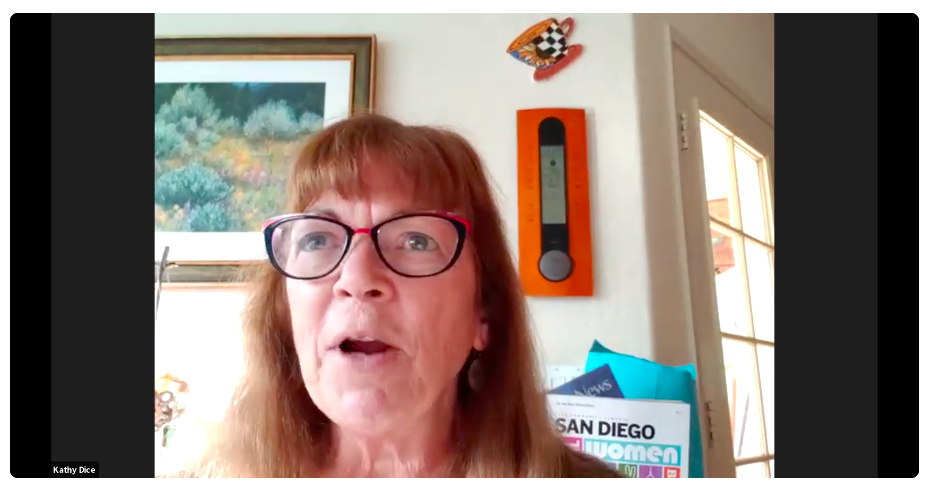
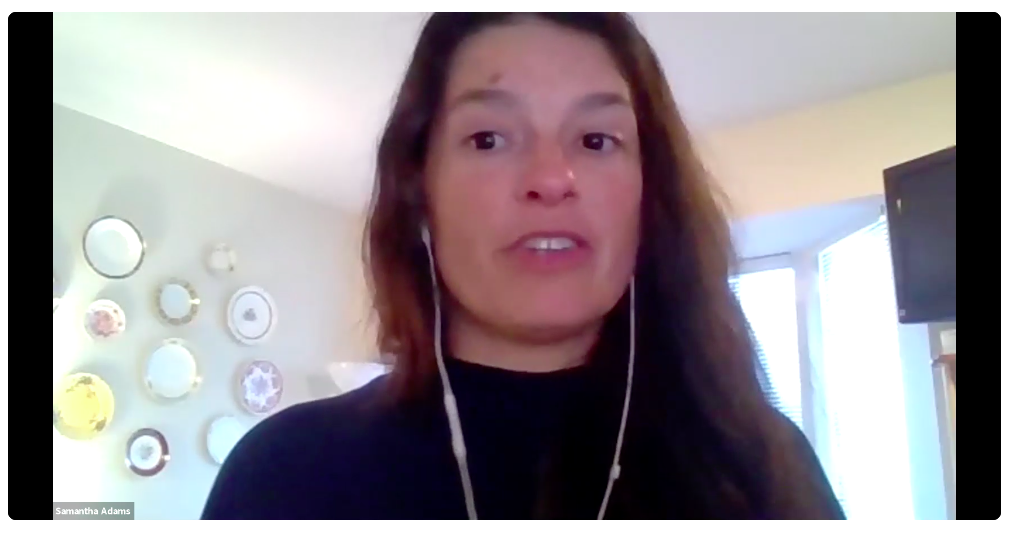

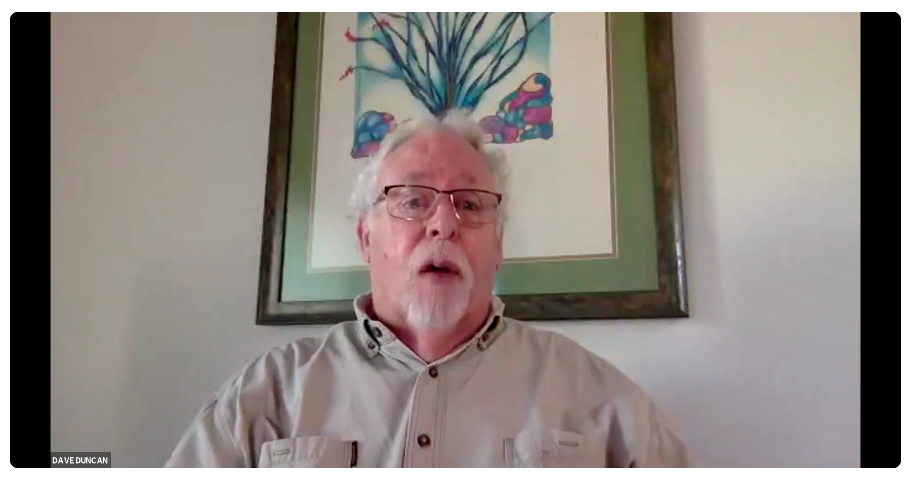
Images from BVSC Zoom Meeting on the Watermaster Board Process – October 2020
While there are signs of hope for a resilient future and engaged participatory planning, Borrego is not without challenges on the horizon. Most notably, San Diego County Water Authority (SDCWA)’s preferred route through Borrego Springs for their proposed Regional Conveyance System (RCS); and funding ramifications of the choice to pursue adjudication over their GSP.
Repeating History: SDCWA Regional Conveyance System Proposal
The San Diego County Water Authority (SDCWA) proposal to build a Regional Conveyance System (RCS) would pipe water from the Colorado River through the Anza-Borrego Desert State Park and Borrego Springs to a 47-mile long tunnel that connects to SDCWA facilities near Escondido. The pitch to Borregans is the option to purchase 20,000 AF per year of Colorado River water, delivered through the RCS. This would augment their severely depleted groundwater supplies, but at significant environmental, socio-cultural, and financial cost.
As detailed in a recent Borrego Sun article, the RCS project is estimated to take 25 years to complete, and 15 of those years would require the small, quiet town of Borrego Springs to morph into “an industrial construction site” to build the trenches, tunnels, and pumping station for the project. The proposed pump house would become the largest building in Borrego, housing four 12,500 horsepower pumps, running day and night. To power the pumping station, a 230 kV powerline transecting the State Park would need to be constructed (a similar powerline project was rejected by the community over a decade ago).
The 20,000 AF per year of Colorado River water would be extremely expensive to Borrego Springs. The community would be required to pay $10-$30 million just for the rights to use the water, and another $5-10 million to SDCWA for transporting this water through the RCS. Because Colorado River water is of significantly poorer quality than Borrego’s groundwater, BWD would then have to cover the cost of cleaning the water before it could be used for drinking water, or building an alternative distribution system to pipe the non-potable water for agriculture and golf course irrigation. Either option would require another $5-10 million in capital costs. The RCS would not deliver water to the community until at least 2047, which is 7 years after Borrego will have reduced its water consumption to its sustainable yield as required by SGMA statute. Furthermore, the Colorado River’s available water supply is already over-allocated, and the impacts of climate change are expected to continue decreasing its availability. The majority of community members view the RCS as a lose-lose for Borrego Springs.
A similar plan was sold to the community from 2007-2010 as a solution to Borrego’s declining groundwater levels. Borregans are concerned that history is repeating itself with the RCS proposal. Despite immense public opposition, the 36-member SDCWA board approved funding for the next phase of the RCS feasibility study by one vote. The next phase of the study will cost $1.3 million in taxpayer dollars; findings will be published in 12-18 months. Without political will in San Diego to halt the project, Borrego Springs – and all of San Diego County – risk spending billions of dollars on a conveyance system that threatens the environmental, social, and economic well-being of the Anza-Borrego Desert State Park and the Borrego Springs community, with minimal public benefit to anyone.

Photo courtesy of Greg Bulla
Ineligible for SGMA Funding
While some characterize Borrego’s “friendly adjudication” (the stipulated agreement) as a faster and less expensive solution than implementing the publicly-developed GSP, the privately-negotiated agreement has significant unintended consequences. With the passage of SGMA, the implementing agencies made it clear that subsequent funding and technical assistance would only be available to basins that developed GSPs compliant with SGMA. Basins preferring to pursue an alternative plan or adjudication were free to do so (as long as these alternatives and adjudications comply with SGMA minimum requirements), but these alternative plans would lose out on the potential for state funding and support. Borrego may expedite local pumping reductions through its settlement agreement, but they have made themselves ineligible for substantial state funding, so critical to supporting a community such as Borrego with achieving its sustainability goals. Now, Borrego is on its own.
It seems history is once again repeating itself in Borrego Springs. The 2002 Regional Water Management Planning Act (SB 1672) offered state funding for regions that developed a voluntary (non-regulatory) Integrated Regional Water Management (IRWM) Plan.
BWD, San Diego County, and community stakeholders spent 2+ years in facilitated negotiations to pursue the IRWM regional acceptance process and develop an IRWM plan. Infighting between water users, however, led to the process’ disintegration. Unable to develop an IRWM plan, Borrego has subsequently missed out on millions of dollars of state IRWM funding, leaving them far behind much of the state in integrated, watershed-scale planning and collaboration.
The State of California has few mechanisms at its disposal to incentivize desired behavior, especially regional coordination and collaborative planning. One of the most effective mechanisms is tying state funding and technical assistance to the desired coordinated planning activities. The passage of SB 375, for example, required regional metropolitan planning organizations (MPOs) to develop Sustainable Communities Strategies (SCS) — long-range plans to achieve GHG emissions reduction targets set by the California Air Resources Board (CARB). The SCS were structured to align transportation, housing, and land use decisions in order to meet CARB’s emissions targets. Like SGMA, regional agencies could continue business as usual through the already required Regional Transportation Plans (RTP), but developing an SCS in place of an RTP came with the benefit of substantial funding and technical support to develop and implement the plans for years to come. SGMA is no different, and Borrego Springs has closed this door of opportunity on itself.
A recent glimmer of hope came in the Department of Conservation’s Sustainable Groundwater Management Watershed Coordinator Program (WCP), which offered funding to hire a regional coordinator that would work with local stakeholders to develop plans and projects to holistically improve watershed health. While the funding was limited, the WCP was one of the few opportunities for basins without compliant GSPs to apply for local support. BVSC applied for the program, hoping the WCP would be the vehicle for the Stewardship Council to continue integrated planning to better align the GMP implementation with the Community Plan update. However, BVSC’s proposal was not selected for the program, leaving the Borrego Springs community once again without access to funding and state support, just like their failed IRWM attempt years ago, and their more recent adjudication decision which made them ineligible for SGMA funding.
Nevertheless, BVSC continues to charge ahead with community capacity building and integrated planning despite these frustrating setbacks. Without available state funding and technical assistance, the community itself must band together to raise funds internally. BVSC has already had some progress raising support from private philanthropy. More will be needed in order to achieve the Stewardship Council’s mission and vision of ensuring the long-term economic vitality, social equity, and well-managed growth for the Borrego Springs community
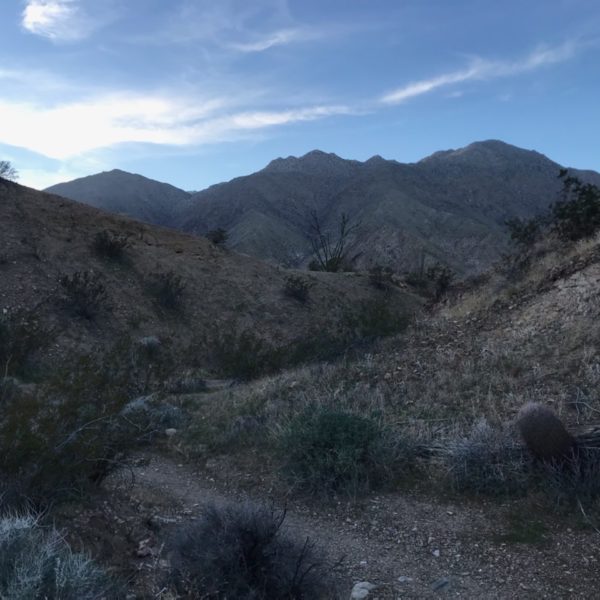
Borrego’s first priority in the new year will be to continue supporting families and individuals affected by COVID-19 and the subsequent economic crisis. The public health and financial impacts of the pandemic further underscore the urgent need for holistic solutions that provide multiple benefits for the economy, the community, and the environment.
As Borrego continues to work toward the 2040 goal of drastically reducing overall water consumption, the temptation of short-term bandaid “easy solutions,” such as the proposed RCS, will be difficult to resist. As Borrego has already seen through its recent history, though, there are no easy answers; and short-sighted thinking often leads to long-term damage. Shared decision-making and collaboration take time and dedication. Implementing the GMP and updating the CP provides an ideal opportunity for the community to come together and articulate real, durable multi-benefit shared solutions for Borrego’s future.
Central to this effort will be an engaged and educated citizenry. Over the past two years, the Stewardship Council has spearheaded numerous initiatives to educate and involve the community in integrated water and land-use planning. This local capacity building will be critical to proactively supporting the Watermaster Board and County Planning Department in implementing the community’s vision for a resilient future. The BVSC leadership team is prioritizing engagement of those who have historically been left out of water and land-use planning. This will ensure that community visioning reflects the priorities and concerns of all Borregans.
Only with an integrated approach, linking Borrego’s economic development, natural and cultural resource management, land-use, and sustainable tourism, can the community pave the way for a resilient future.
